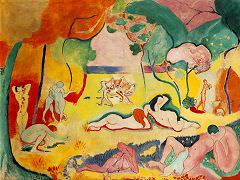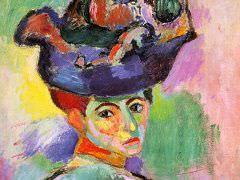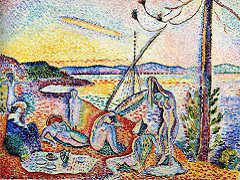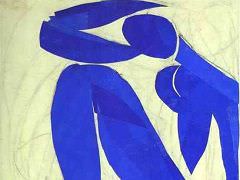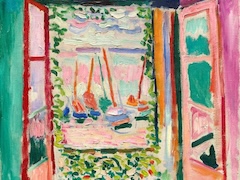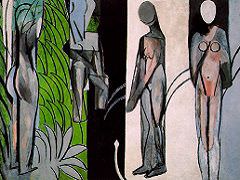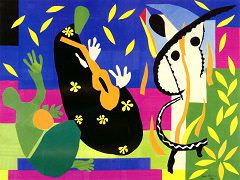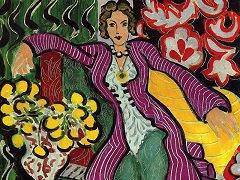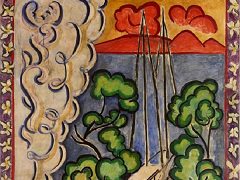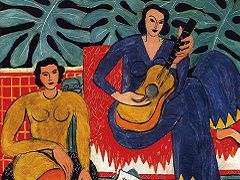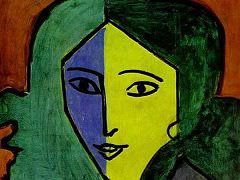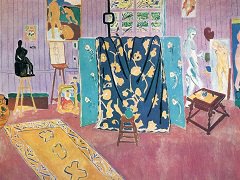Red Interior, Still Life on a Blue Table, 1947 by Henri Matisse

In Red Interior, Still Life on a Blue Table the motif is almost everyday, with nothing unusual to attract our attention. It shows a room with a medallion on the wall. A round table, with fruits and a vase of flowers, stands near the open verandah door, through which we can see into the garden. The picture's powerful impact derives from its decor and colourfulness. The artist has shrewdly kept to a very few tones of yellow, red, blue and green - Matisse, after all, held that "an avalanche of colours loses all its force. Colour can achieve its full expressive power only if it is organized, and its degree of intensity corresponds to the emotion in the artist."
This correspondence appears inevitable in this interior. A black zigzag has been introduced to the red walls and floor, enlivening the surfaces and enhancing the spatial depth of the picture. The black lines render the red equivalent to the other colours. The spatial qualities of the picture are easy to grasp, but what prevails is colour, arranged in zones, and the objects seem somehow dematerialized. It is as if Matisse had applied principles learnt in the composition of cut-outs to his paintings. This interior is a work radiant with harmony and undiluted Le bonheur de vivre.

